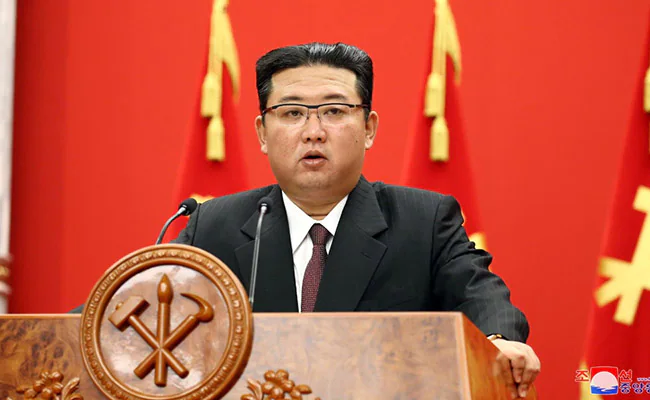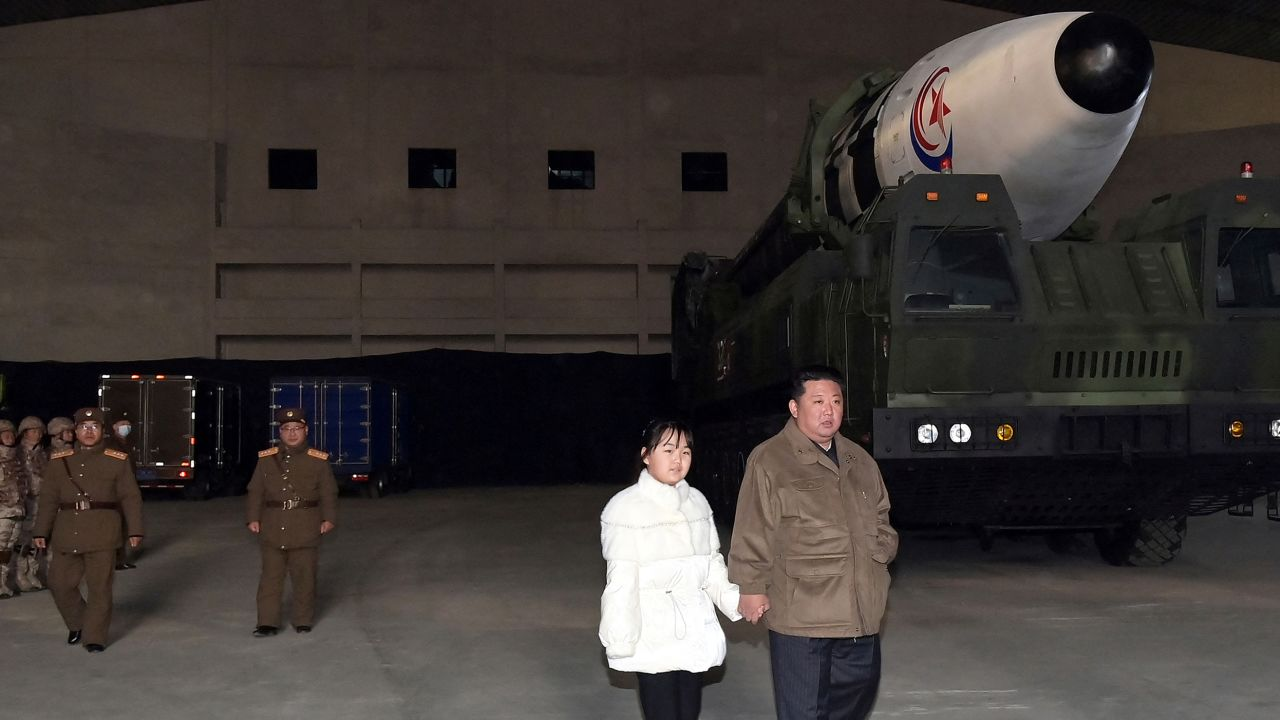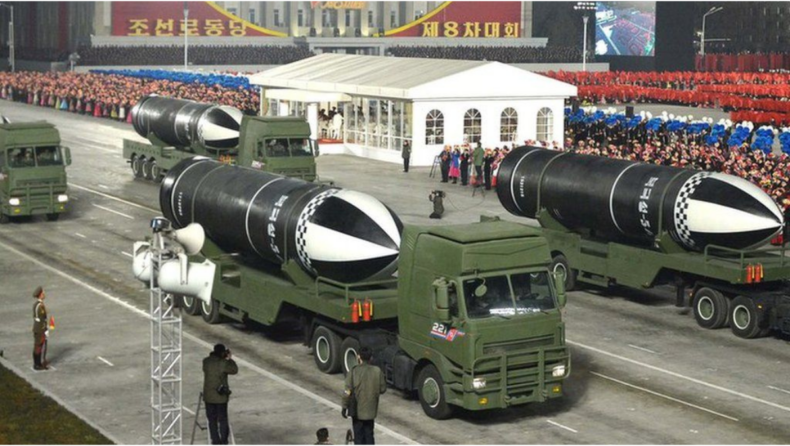
State media said on Saturday that North Korean leader Kim Jong Un had threatened to use nuclear weapons in response to US threats. Kim had personally monitored Pyongyang’s most recent intercontinental ballistic missile launch.
Washington has increased regional security cooperation, including cooperative military drills, since Kim proclaimed North Korea an “irreversible” nuclear state in September. Washington is also searching for measures to increase the protection it provides Seoul and Tokyo.
Kim denounced what he dubbed “aggression war games” and warned that Pyongyang “would definitely answer to nukes with nuclear weapons and to the ultimate confrontation with all-out conflict” if America keeps threatening the North.
\State media images showed a beaming Kim walking in front of a massive black-and-white missile, accompanied by an adoring young girl wearing a puffer jacket and red shoes. KCNA claimed that Kim attended the launch “together with his beloved daughter and wife.”
The mention of Kim’s children in state media is incredibly uncommon, and this is thought to be one of the first official confirmations of his daughter, according to experts.

Friday witnessed the launch of “a new type” of intercontinental ballistic missile under the direction of North Korean leader Kim Jong Un and his young daughter, whose existence had not been previously verified.
The ICBM is reportedly sitting on its mobile launch platform nearby while Kim appears to be holding hands with the girl in startling photos provided by the state-run Korean Central News Agency (KCNA).
The “new” missile being seen by the two, according to KCNA, is a Hwasong-17 that was fired from Pyongyang International Airfield and travelled 999.2 kilometres (621 miles).
Following the launch on Friday, Japan issued a warning that the new missile looked to have the potential range to reach the US mainland.
According to the KCNA article, Kim claimed the test was meant to “clearly display” his nation’s capability to counter what he called the “hysteric aggressor war rehearsal

The launch on Friday, which, according to Japanese officials, landed around 210 kilometres (130 miles) west of the Japanese island of Oshima Oshima, was not the first time North Korea shot an ICBM that analysts and officials have estimated could theoretically reach the US.
According to a report by the Korean Central News Agency (KCNA) at the time, Pyongyang’s missile test on March 24 recorded the greatest height and longest duration of any North Korean missile ever fired, whereas Friday’s rocket was shorter in altitude and distance. According to KCNA, that missile travelled 1,090 kilometres (681 miles) and reached an altitude of 6,248.5 kilometres (3,905 miles).
And in 2017, James Mattis, who was then the US defence secretary, claimed that a North Korean missile test that year showed it could target “anything in the globe.”
Ballistic missiles are launched into space and then re-enter our atmosphere. Experts have yet to witness unambiguous evidence that North Korea can successfully get a warhead for the violent descent into Earth’s atmosphere.
Threats from Kim against the US and South Korea were also not new.
The North Korean leader warned his enemies that his nuclear forces are completely ready for “real war” following a missile launch in October.
Kim stated in a KCNA report that “our nuclear fighting forces… demonstrated again their full readiness for genuine battle to bring the adversaries under their grip.”
The personal life of Kim Jong Un and his family is mostly unknown.
Kim’s daughter, who was appearing in the news story on Saturday, was not named.
North Korea’s arsenal
North Korea could create enough fissile material for six or seven bombs a year and had enough for 40 to 50 nuclear weapons as of 2021. This could endanger millions of lives if nuclear non-proliferation and war de-escalation strategies topple over and we see ourselves in another world war
These weapons, which Leader Kim Jong Un has pursued in violation of some of the strongest sanctions in the world, are essential to protecting his reign from any future attacks from what he perceives as “hostile forces,” who are essentially the United States and South Korea. The ultimate objective of Kim, according to some observers, maybe to invade South Korea, as his grandfather Kim Il Sung attempted failed to do in 1950 and to prevent
Washington from assisting Seoul in the event of a conflict.
Although the 38-year-old leader first gave the impression that he was open to disarmament, he decisively closed that door in September by calling North Korea’s nuclear status “irreversible” and passing new legislation that established the ability to launch a preemptive nuclear strike.
“Through unheard of sanctions and blockade(s) … they are trying to lead us but to give up the nuclear weapons of our own accord,” Kim told a session of the country’s rubber-stamp parliament on September 8.
“But never!” he said.
“Let them impose sanctions for 100, nay 1000 days, or even 10 or 100 years.”













